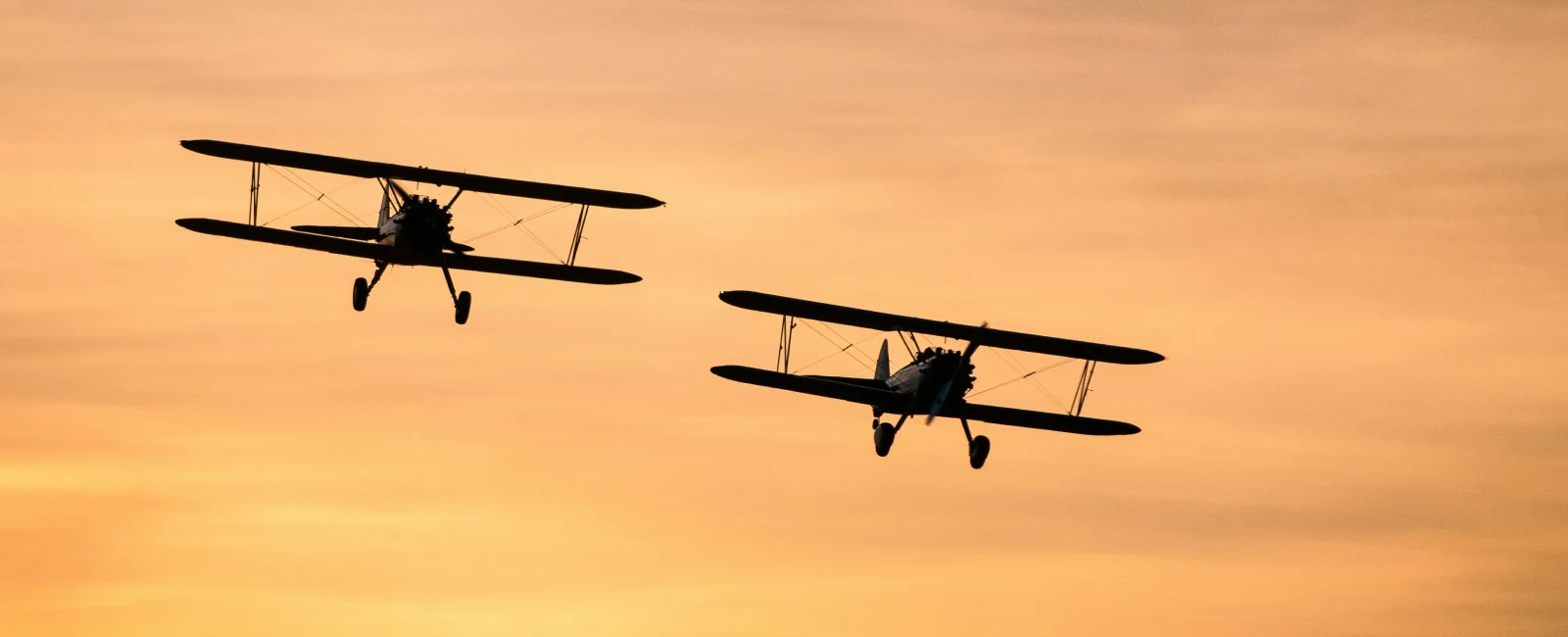Bavaria’s rich history includes a remarkable contribution to the field of aviation. It is a region that not only saw early pioneers experiment with flight but also nurtured world-class aviation companies and research. The unique landscape of Bavaria—mountains, vast plains, and fertile cities—gave birth to many innovations in the skies. Today, you can explore this history through museums, airfields, and former factories that still stand as a testament to Bavaria’s unique role in the history of aviation.
The Early Years: Otto Lilienthal and the Dream of Flight
Before aviation took off worldwide, Bavarians already dreamt of flight. One notable figure, Otto Lilienthal, born in 1848 in Anklam, was instrumental in early flight experiments. Although not a native Bavarian, his work deeply influenced Bavarian aviation. Lilienthal developed gliders and laid the foundation for modern flight principles. His influence reached Bavarian engineers, who pushed aviation boundaries in the late 19th century.
One significant development took place in Munich, where engineers studied his work. They experimented with gliders in the hilly regions of Bavaria, hoping to understand lift and thrust better. These early efforts set the stage for the development of aircraft that could sustain controlled flight. Bavaria’s unique role in the history of aviation began with this scientific curiosity.
Engineers in Bavaria were particularly inspired by Lilienthal’s studies on wing curvature and aerodynamic efficiency. They applied his theories to their own designs, incorporating the local terrain for more effective testing. Bavaria’s topography, with its hills and valleys, proved ideal for glider experimentation. Lilienthal’s tragic death in 1896 further fueled Bavarian resolve to continue his legacy. Local inventors sought to build safer, more stable designs based on his glider models. These early Bavarian experiments were critical in proving that controlled, sustained flight was achievable. As the 20th century dawned, Bavaria stood ready to take aviation to new heights. The region’s engineers became key players in turning early flight dreams into practical realities.
The Zeppelin: Count Ferdinand von Zeppelin and Airships
No story about Bavaria’s aviation history would be complete without mentioning Count Ferdinand von Zeppelin. Born into Bavarian nobility, Zeppelin is most famous for creating the giant airships that bear his name. His vision of a rigid airship capable of long-distance travel reshaped global transportation in the early 20th century.
The first Zeppelin took flight in 1900. These massive airships represented a quantum leap in aviation technology. Zeppelin’s work, based out of Lake Constance (the Bodensee), became synonymous with luxury travel. Although Zeppelin’s innovations were utilized throughout Germany, Bavaria played a critical role in developing the infrastructure necessary for airship maintenance and construction. Factories and airfields in Bavarian cities like Augsburg helped manufacture and service these giant crafts.
Zeppelin’s airships symbolized the height of aviation luxury, offering flights across Europe and to distant lands. Bavaria’s role in creating and sustaining these airships solidifies its unique place in the aviation industry.

Claude Dornier: The Engineer Who Transformed Aviation
Another iconic figure from Bavaria’s aviation history is Claude Dornier. Born in Kempten, Bavaria, in 1884, Dornier revolutionized aircraft design and construction. His early work with Count Zeppelin in Friedrichshafen led him to create planes that expanded the boundaries of aviation. Dornier’s early fascination with flying boats shaped much of his career.
Dornier’s company, Dornier Flugzeugwerke, created the Do X, the largest flying boat of its time. This massive aircraft carried over 150 passengers and became a symbol of aviation might. While Dornier conducted much of his work in Friedrichshafen, Bavaria’s contribution to his success remains undeniable. Bavarian engineers and workers played a significant role in developing the components necessary for his aircraft.
Furthermore, Dornier’s aircraft impacted both military and commercial aviation. During World War II, Dornier’s planes became crucial for German air power. His legacy lives on through Bavarian aerospace innovations, where Dornier’s designs inspired future generations of aircraft engineers.
World War I and Bavaria’s Aviation Factories
World War I significantly accelerated Bavaria’s aviation advancements. With the war came a need for robust aircraft production, and Bavaria became a hub for building and designing fighter planes. Companies like Albatros Flugzeugwerke and Bayerische Flugzeugwerke (BFW) took charge of producing aircraft for the German military. These factories, located in cities like Augsburg and Munich, employed thousands of workers who constructed some of the war’s most important planes.
BFW, which later became known as Messerschmitt, developed aircraft that were faster and more durable than ever before. The Messerschmitt company, originally founded in Bavaria, shaped global aviation history by designing iconic planes, including the Bf 109 fighter. This fighter dominated the skies during World War II, becoming one of the most successful aircraft in aviation history.
Bavaria’s unique role in the history of aviation shines brightly through its contributions to military aircraft. The factories not only boosted the local economy but also pushed the boundaries of aircraft technology.
Messerschmitt and the Rise of Aviation Technology
Messerschmitt’s Bf 109 was one of the most influential planes in World War II. Designed by Willy Messerschmitt, who was born in Frankfurt but later worked extensively in Bavaria, the Bf 109 set new standards for speed, maneuverability, and firepower. It became the backbone of the Luftwaffe and saw action throughout the war.
Willy Messerschmitt’s connection to Bavaria ran deep. He started his company, Bayerische Flugzeugwerke (BFW), in Augsburg. The company later became Messerschmitt AG, cementing Bavaria’s role as a leader in aviation technology. The Bf 109 was not only an engineering marvel but also a testament to Bavarian ingenuity. Messerschmitt continued to design cutting-edge planes after the war, including jet aircraft that broke speed records.
Messerschmitt’s legacy lives on in Bavaria, with many aviation enthusiasts visiting the Deutsches Museum in Munich to see some of his aircraft up close. Bavaria’s unique role in the history of aviation is closely tied to the genius of Willy Messerschmitt and his groundbreaking designs.
Post-War Aviation: A New Era in Bavaria
After World War II, Bavaria’s aviation industry had to rebuild. Many factories were destroyed or repurposed, and the Allies imposed strict limitations on German aircraft production. Despite these challenges, Bavaria remained resilient. By the 1950s, the region began to see a revival in aerospace engineering.
Munich became home to several new aerospace companies. The government supported research into aviation technologies, and Bavarian universities began offering specialized programs in aerospace engineering. This focus on education and research laid the groundwork for Bavaria to re-emerge as an aviation hub in Europe.
Airports like Munich’s Franz Josef Strauss Airport also played a critical role in modern aviation. As one of the busiest airports in Europe, it became a key hub for international travel and technological advancement. Bavaria’s unique role in the history of aviation transitioned from a wartime production hub to a center for research, commercial aviation, and cutting-edge innovation.
Airbus and Bavaria: A New Chapter in Aviation History
Today, Bavaria continues to play a major role in aviation through its partnership with Airbus. Airbus, one of the world’s leading aircraft manufacturers, has several key facilities in Bavaria. These include the Airbus Helicopters headquarters in Donauwörth and the Airbus Defence and Space division located in Ottobrunn near Munich.
The presence of Airbus in Bavaria highlights the region’s ongoing contribution to global aviation. Engineers and technicians from across Bavaria work on next-generation aircraft, including military jets, helicopters, and commercial planes. Airbus’s facilities in Bavaria are essential to the development of safer, more efficient aircraft. These teams are also instrumental in driving innovations in unmanned aerial vehicles, enhancing the scope of future aviation technology. Bavaria’s aerospace workforce is recognized for their precision and advanced engineering capabilities. Furthermore, collaborations with local universities ensure a continuous flow of fresh talent into the aviation sector. The region’s strong emphasis on research and development has positioned Airbus’s Bavarian facilities as a hub for pioneering aviation breakthroughs. Recent investments in sustainable aviation technologies also underscore Bavaria’s commitment to shaping the future of global flight.
Bavaria’s unique role in the history of aviation continues to evolve, with the region positioned at the forefront of aerospace technology. Through its collaboration with Airbus, Bavaria remains an integral part of Europe’s aviation landscape.
Bavarian Aviation Museums: Preserving History for Future Generations
Bavaria’s contribution to aviation is not just confined to aircraft production. The region also offers visitors a chance to explore aviation history through its world-class museums. The Deutsches Museum in Munich houses an impressive collection of historic aircraft, including several planes from the early 20th century and World War II.
Another must-see aviation museum is the Flugwerft Schleissheim, located just outside Munich. This museum, part of the Deutsches Museum, showcases aircraft from all eras, including a fully restored Dornier Do 31. Visitors can get up close to historic planes, jets, and even helicopters, understanding Bavaria’s unique role in the history of aviation firsthand.
These museums help preserve the rich aviation heritage of Bavaria. They educate the public and inspire the next generation of engineers and pilots. Through their exhibitions, Bavaria’s significant contributions to aviation remain alive and relevant for future generations.
Bavaria and the Future of Aviation
As we move into the future, Bavaria’s role in aviation continues to grow. The region remains a leader in aerospace research, particularly in developing greener, more sustainable aircraft. Bavarian universities collaborate with Airbus and other aerospace companies to develop technologies that will shape the future of flight.
One such innovation is the focus on electric planes and hybrid propulsion systems. Engineers in Bavaria are working tirelessly to reduce aviation’s carbon footprint, ensuring that future generations can travel the skies with minimal environmental impact. This commitment to innovation and sustainability positions Bavaria as a key player in shaping the future of global aviation.
Bavaria’s unique role in the history of aviation will likely continue to expand as new challenges and opportunities arise. Whether through cutting-edge research, technological advancements, or maintaining its historical legacy, Bavaria will remain a cornerstone of the aviation industry.
Conclusion: Bavaria’s Ongoing Aviation Legacy
From the early glider experiments to the cutting-edge technologies of Airbus, Bavaria’s unique role in the history of aviation is undeniable. The region has contributed immensely to both military and civilian aviation, producing iconic aircraft and pushing technological boundaries. Bavaria’s history is deeply intertwined with the pioneers who dared to dream of flight and the engineers who turned those dreams into reality.
Today, Bavaria continues to shape the future of aviation, standing as a global hub for aerospace innovation. Its museums, factories, and research centers serve as reminders of its illustrious past and a beacon of hope for the future of aviation. Bavaria’s skies have witnessed some of aviation’s most remarkable milestones, and its role in this exciting industry will only grow stronger in the years to come.



